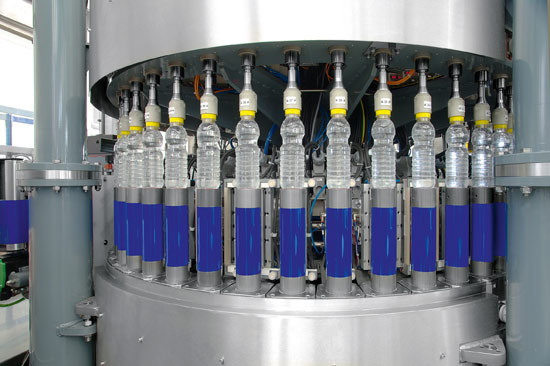 The Rollsleeve labeler combines the simplicity of its consolidated roll-fed group, resulting in highly customized container labeling, with the advantage of label film cost reduction.
The Rollsleeve labeler combines the simplicity of its consolidated roll-fed group, resulting in highly customized container labeling, with the advantage of label film cost reduction.
Sidel Group launches the new Rollsleeve. The Rollsleeve machine is an innovative rotary labeler that creates and applies plastic shrink sleeves from a machine direction orientation (MDO) label roll onto glass, plastic and metal containers. The Rollsleeve combines the simplicity of its consolidated roll-fed group, resulting in highly customized container labeling, with the advantage of label film cost reduction.
According to figures announced in the AWA Labeling and Product Decoration Markets Global Review 2010, the market for heat shrink labels is growing fast (+4.4% in 2009) and at a much higher rate than other types of labels. The trend is particularly strong in rapidly industrializing countries (South America, China and India). Launching the new Rollsleeve, the Sidel Group aims to meet these fast growing market requirements. A unique solution in the market due to the combination of four advantages that are particularly important for the customer and rarely found in a single solution: savings in costs, flexibility, quality and sustainability.

A significant aspect, giving Rollsleeve an edge on more traditional sleeving systems, is the fact that the “tubing” takes place in the machine and ready made sleeves do not need to be outsourced. Rollsleeve tube creation process uses a MDO film (Machine Direction Orientation): this means that the film is stretched in the same direction of the machine.
As a result, the converting phase is lessened by two manufacturing steps: the forming and welding of the sleeves are now unnecessary. This system brings savings in the cost of label material up to 30%, compared to a traditional sleeve (TDO – Transversal Direction Orientation). Sidel Group estimates that with a throughput of 200 million bottles per year savings on the costs of label material alone mean that the entire initial investment will be recovered in 18 months.
Two machines in one which guarantees flexibility A further major advantage of the Rollsleeve is the very simple way that you can change from sleeving to hot glue roll-fed applications. In around ten minutes more than a normal format changeover, thanks to an exclusive patented Sidel Group system and with a simple routine action started from the operator panel, the Rollsleeve becomes a roll-fed machine using the same labeling unit. The advantages in terms of lay-out are self-evident. Moreover, the Rollsleeve can be equipped with a module for partial body sleeve labels.

Rollsleeve technology does not stress the film since the label is “tubed” and wrapped round the container in the machine without any machine movement (it’s the bottle that moves). Furthermore, the new sealing system offers great flexibility in the choice of materials for labels with considerable benefits in terms of optimizing costs. Sidel has successfully tested all the principal materials available on the market, i.e. PET, recycled PET, PVC, PE, PP, OPS and PLA. It can apply labels that are 50% thinner compared to a traditional sleever (that hardly allows thickness less than 50 microns) with thickness ranging from 18 to 150 microns (the latter is used when isolation from heat is required).
The special feature of this machine is shrink sleeve creation and application by a lengthways reel, thus ensuring that the labels are closed with no need for glues or solvents. As a result of the “heat & cool” sealing system, Sidel guarantees an excellent result. Since the sealing area can be positioned exactly to the edge of the label, the final overlap has no visual or tactile flaws after shrinkage. The quality of labeling is optimal even with high speeds (up to 54,000 bph) and doesn’t depend on the height of the container (the tube label is not lowered from above as in traditional technology).



